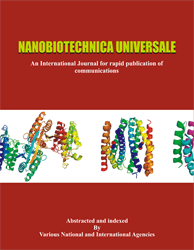Co-cultivation of Fungal inoculants for an effective Biodegradation of poultry feathers and preparation of compost
1R. Jayapriya, 2Sumitha Jagadibabu, 3S. Kavi Karunya, 1B. Lokeshwari and 1*P. Saranraj
1PG and Research Department of Microbiology, Sacred Heart College Autonomous, Tirupattur – 635 608 India 2Department of Microbiology, Justice Basheer Ahmed Sayeed College for Women Autonomous, Chennai – 600 018 India 3PG and Research Department of Microbiology, Shanmuga Industries Arts and Science College, Tiruvannamalai – 606 603 India CorrespondingAuthor E.mail: microsaranraj@gmail.com
ABSTRACT
Environmental pollution by the Poultry feathers is one of the major nuisance to the environment because of its bad odour and transmission of various microbial diseases. Keratinolytic fungi have a great importance in the biodegradation of Poultry feather wasted and its improvement of livestock feed and production of protein hydrolysates. The present research deals with the Co-cultivation of Fungal inoculants for an effective biodegradation of Poultry feathers and preparation of Compost material for an agricultural purpose. The present study was also aimed to prepare the Compost fertilizer by using a Poultryfeathers wastes. The collected feathers are degraded with the help of selected fungal isolates and converted into Compost fertilizer. Waste feathers of Broiler chicken were collected from theTirupattur poultryfarm, Proteolytic fungi were isolated by Serial dilution technique and, identified by Lactophenol cotton blue (LPCB) staining and Platting in Sabouraud’s Dextrose Agar (SDA). Three fungal isolates viz., Aspergillus niger, Trichoderma viride and Beauveria bassiana were isolated and identified in the present research. The three fungal isolates were screened for its Proteolytic activity and efficient isolates were selected for the Poultry feather degradation. The growth of the three fungal isolates were optimized under different pH, Temperature and Culture conditions for studying the best growth conditions for the Poultry feather degradation process. The effect of Aspergillus niger, Beauveria bassiana and Trichoderma viride on Poultry feather degradation was determined in the present research by Single and Co-cultivation treatment methods. In conclusion, Co-cultivation method showed an excellent result than the Single cultivation method. Among the six treatments studied in this present research, an effective Poultry feather degradation was noticed in the combination of Trichoderma viride and Beauveria bassiana, and less feather degradation was observed in the treatment containing Beauveria bassiana alone.
